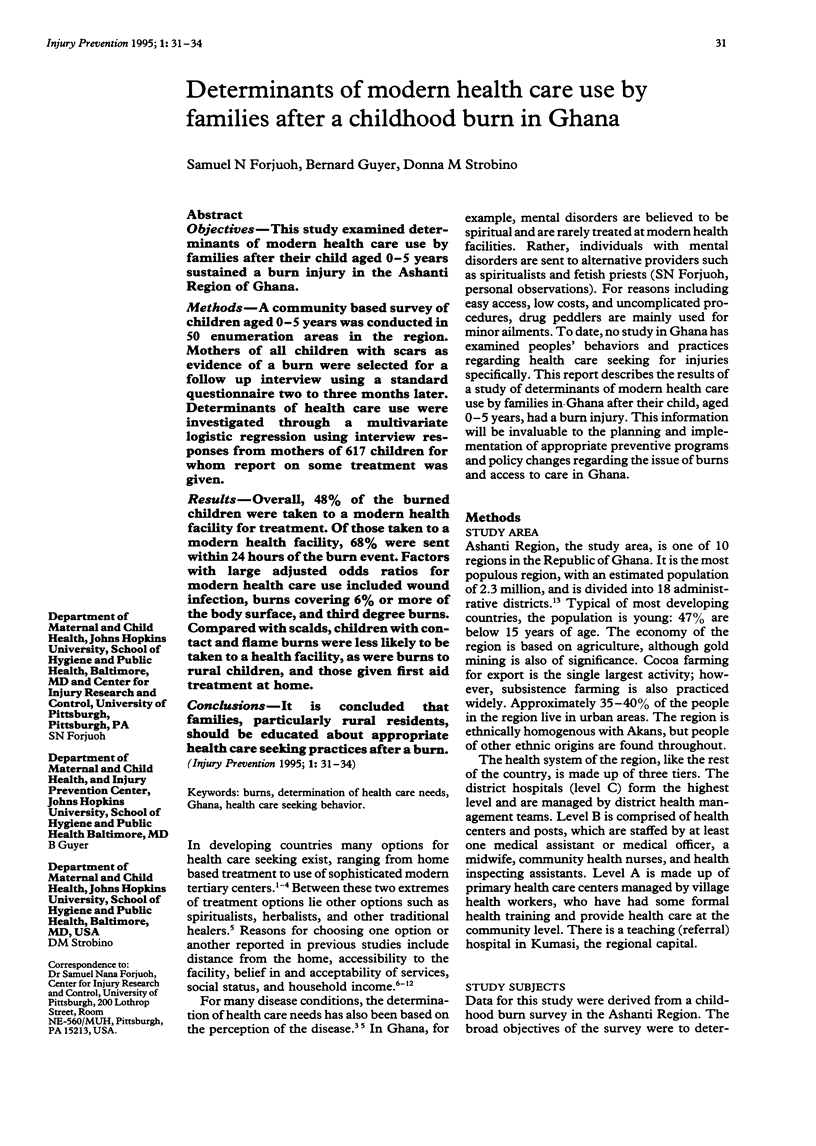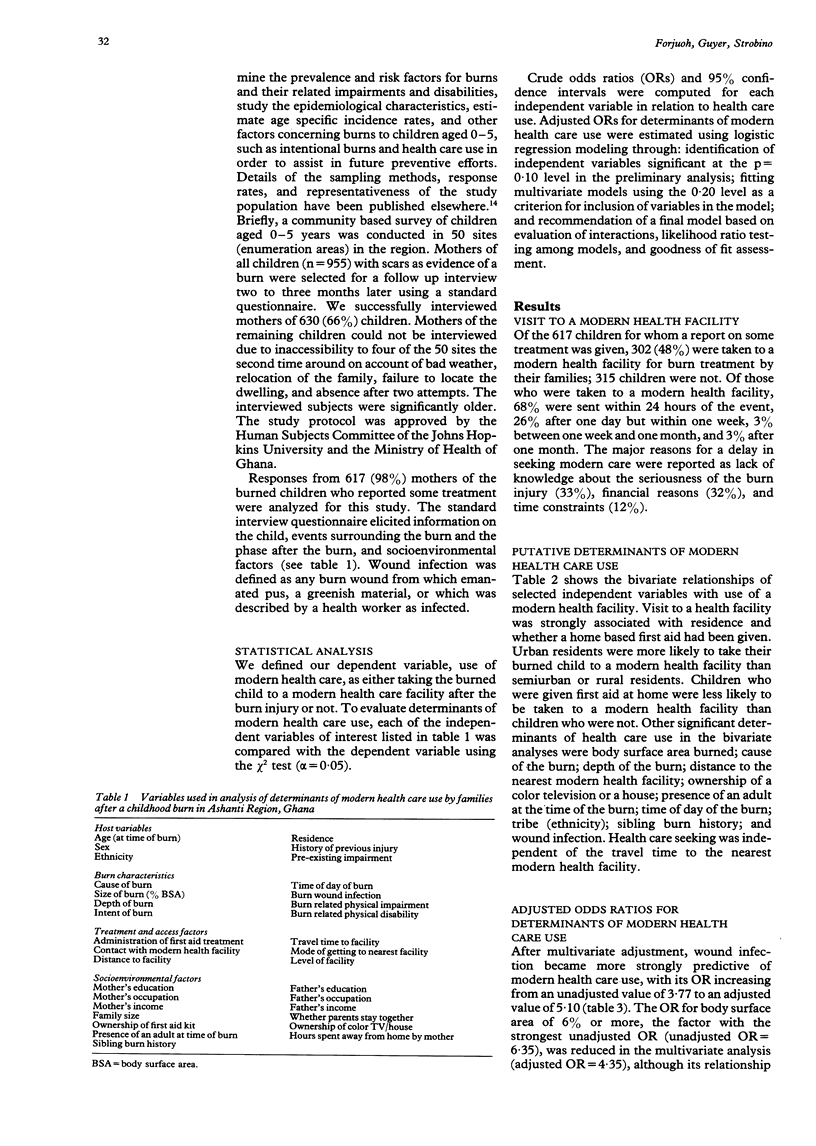Abstract
OBJECTIVES: This study examined determinants of modern health care use by families after their child aged 0-5 years sustained a burn injury in the Ashanti Region of Ghana. METHODS: A community based survey of children aged 0-5 years was conducted in 50 enumeration areas in the region. Mothers of all children with scars as evidence of a burn were selected for a follow up interview using a standard questionnaire two to three months later. Determinants of health care use were investigated through a multivariate logistic regression using interview responses from mothers of 617 children for whom report on some treatment was given. RESULTS: Overall, 48% of the burned children were taken to a modern health facility for treatment. Of those taken to a modern health facility, 68% were sent within 24 hours of the burn event. Factors with large adjusted odds ratios for modern health care use included wound infection, burns covering 6% or more of the body surface, and third degree burns. Compared with scalds, children with contact and flame burns were less likely to be taken to a health facility, as were burns to rural children, and those given first aid treatment at home. CONCLUSIONS: It is concluded that families, particularly rural residents, should be educated about appropriate health care seeking practices after a burn.
Full text
PDF



Selected References
These references are in PubMed. This may not be the complete list of references from this article.
- Bailey W., Phillips D. R. Spatial patterns of use of health services in the Kingston metropolitan area, Jamaica. Soc Sci Med. 1990;30(1):1–12. doi: 10.1016/0277-9536(90)90324-l. [DOI] [PubMed] [Google Scholar]
- Belcher D. W., Wurapa F. K., Neumann A. K., Lourie I. M. A household morbidity survey in rural Africa. Int J Epidemiol. 1976 Jun;5(2):113–120. doi: 10.1093/ije/5.2.113. [DOI] [PubMed] [Google Scholar]
- Chernichovsky D., Meesook O. A. Utilization of health services in Indonesia. Soc Sci Med. 1986;23(6):611–620. doi: 10.1016/0277-9536(86)90155-3. [DOI] [PubMed] [Google Scholar]
- Feldman S. The use of private health care providers in rural Bangladesh: a response to Claquin. Soc Sci Med. 1983;17(23):1887–1896. doi: 10.1016/0277-9536(83)90166-1. [DOI] [PubMed] [Google Scholar]
- Fosu G. B. Access to health care in urban areas of developing societies. J Health Soc Behav. 1989 Dec;30(4):398–411. [PubMed] [Google Scholar]
- Hunte P. A., Sultana F. Health-seeking behavior and the meaning of medications in Balochistan, Pakistan. Soc Sci Med. 1992 Jun;34(12):1385–1397. doi: 10.1016/0277-9536(92)90147-i. [DOI] [PubMed] [Google Scholar]
- Kaona F. A., Siziya S., Mushanga M. The problems of a social survey in epidemiology: an experience from a Zambian rural community. Afr J Med Med Sci. 1990 Sep;19(3):219–224. [PubMed] [Google Scholar]
- Ogoh Alubo S. Power and privileges in medical care: an analysis of medical services in post-colonial Nigeria. Soc Sci Med. 1987;24(5):453–462. doi: 10.1016/0277-9536(87)90220-6. [DOI] [PubMed] [Google Scholar]
- Shannon G. W., Skinner J. L., Bashshur R. L. Time and distance: the journey for medical care. Int J Health Serv. 1973 Spring;3(2):237–244. doi: 10.2190/FK1K-H8L9-J008-GW65. [DOI] [PubMed] [Google Scholar]
- Stock R. Distance and the utilization of health facilities in rural Nigeria. Soc Sci Med. 1983;17(9):563–570. doi: 10.1016/0277-9536(83)90298-8. [DOI] [PubMed] [Google Scholar]


